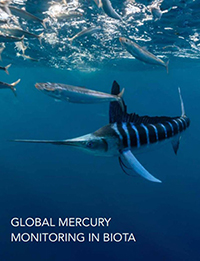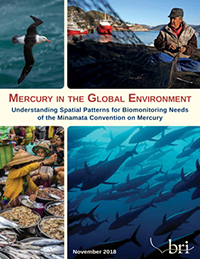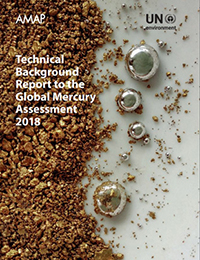Monitoring Biota: Understanding Mercury Exposure through Monitoring At-risk Species
Fish and wildlife provide important information on the environmental impacts of mercury pollution and potential risks related to human health. Biotic monitoring is the process of assessing the health of organisms and ecosystems and tracking changes in mercury risk and exposure over time.
The goal of the Minamata Convention on Mercury is to “protect the human health and the environment from anthropogenic emissions and releases of mercury and mercury compounds.” Monitoring mercury exposure to wildlife as outlined in Article 19 (including fish, sea turtles, birds, and marine mammals) will help the global community to meet the requirements of the Convention moving forwards.
REPORT: GLOBAL MERCURY MONITORING IN BIOTA

Monitoring mercury in biota (plants and animals) provides a pathway for understanding spatial gradients, temporal trends, and environmental magnitude of concern that cannot be ascertained in air, water, or sediment. Emphasizing upper trophic level biota for monitoring ultimately provides a confident ability to assess whether the global input of anthropogenic mercury into the environment is safe or harmful to fish, wildlife and humans. Learn more by downloading the full technical report or the 8-page summary below.
Global Mercury Monitoring in Biota (8-page summary)
Technical Information Report on Mercury Monitoring in Biota
Mercury in the Global Enviornment- GBMS

BRI has developed a Global Biotic Mercury Synthesis (GBMS) database, the first of its kind, that is a compilation and synthesis of published fish, sea turtle, bird, and marine mammal mercury data collected from all over the world.
The GBMS database provides a standardized and comprehensive platform for understanding mercury concentrations in biota outlined in Article 19 of the Convention. Data from the GBMS database are presented in BRI’s report, Mercury in the Global Environment, and in two companion reports, Mercury in the Global Environment: Marine Mammals and Mercury in the Global Environment: Tuna.
Click the links below to learn more about our GBMS database and publications:
Local, Regional, and Global Biomonitoring

Local, Regional, and Global Biomonitoring: Understanding Mercury Exposure through Monitoring At-risk Species. This publication describes the who, what, how, why, and where of biomonitoring efforts as set forth in Article 19 of the Minamata Convention on Mercury. The booklet outlines the biomonitoring process in detail, and provides case study examples for taxa including fish, sea turtles, birds, marine mammals, and humans.
Global Mercury Assessment 2018

The Global Mercury Assessment 2018 is the fourth such assessment undertaken by The United Nations Environment Programme, following earlier reports in 2002, 2008, and 2013. It is the second assessment produced by UN Environment in collaboration with the Arctic Monitoring and Assessment Programme. The assessment is supported by a technical background document, the chapters of which have been prepared by teams of experts, including BRI, and peer-reviewed for scientific quality. Specifically, BRI was the lead author of Chapter 7: Mercury concentrations in biota, in the Technical Background Report to the Global Mercury Assessment 2018.
Download the full reports and a summary of key findings below.
Global Mercury Assessment 2018
Global Mercury Assessment 2018: Key Findings
Technical Background Report to the Global Mercury Assessment 2018
Developing Future Biotic Monitoring Efforts
BRI is currently collaborating with UN agencies to develop future biotic monitoring efforts across the globe to establish a baseline and examine temporal trends of mercury exposure to humans and the environment.

Above: Expert Consultation for Biota and Soil Mercury Monitoring, as contributions to the EE Ad-hoc group, at the International Atomic Energy Agency in Monte Carlo, Monaco, May 13-14, 2019.

Above: Representatives from UN Environment and leaders in mercury research from around the world met in Ottawa, Canada, March 5-7, 2018, to discuss strategies for future global biomonitoring efforts.


